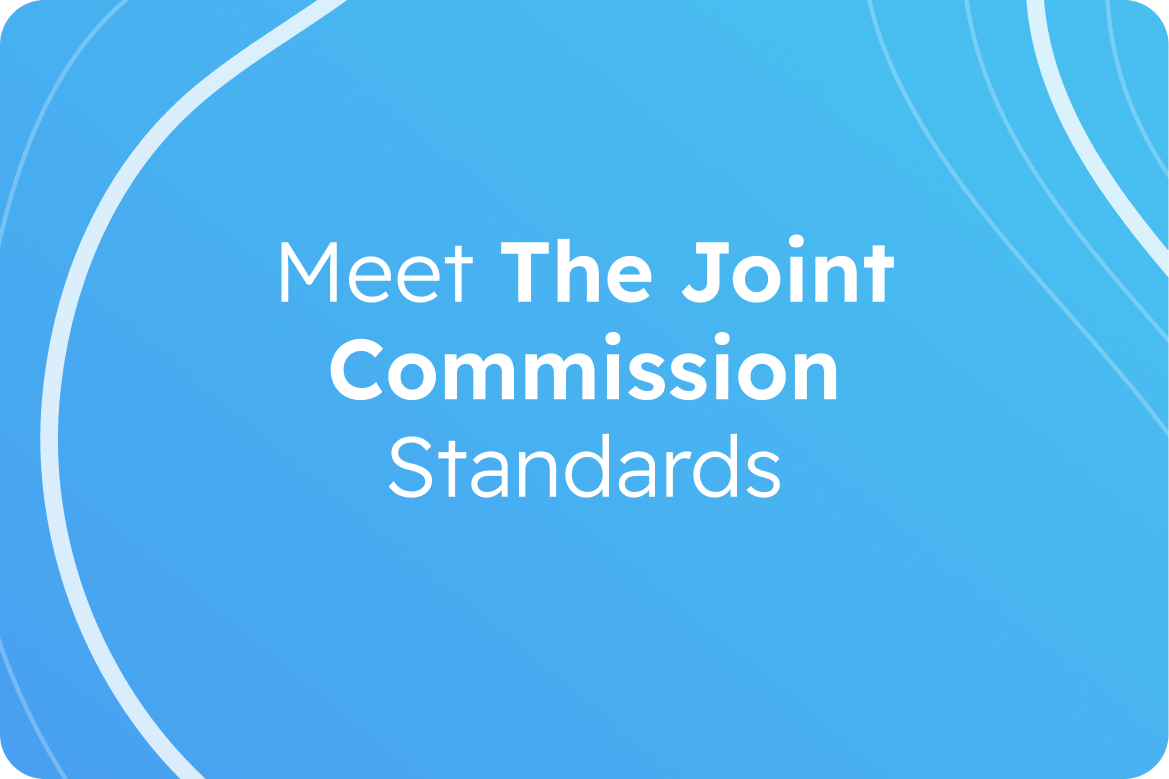In the realm of healthcare services, there is a common pursuit: providing the best in patient care and safety. Enter: The Joint Commission. The Joint Commission plays a vital role in enhancing healthcare facility survey readiness through its accreditation process and continuous commitment to maintaining and improving healthcare standards.
Founded in 1951, The Joint Commission is an independent, nonprofit organization that evaluates and accredits healthcare organizations and programs in the United States. Known for its rigorous standards and commitment to patient-centered care, The Joint Commission has emerged as a crucial player in shaping the landscape of healthcare organizations.
If your healthcare facility is considering a partnership with The Joint Commission in the pursuit of accreditation, kudos to you! This will ensure the overall enhancement of patient care at your facility. But, it’s no easy feat. Otherwise, everyone would do it, right?
That’s why we’re here to explain a few ways facilities can prepare for a partnership with The Joint Commission, and be on their way to accreditation, with the right technology.
Preparing Processes for The Joint Commission
Healthcare facilities seeking accreditation from The Joint Commission undergo a thorough evaluation of their processes, policies, and overall performance. This accreditation process includes a detailed on-site survey by healthcare professionals who assess the facility’s compliance with established standards. This process helps facilities identify areas of strength and areas that may need improvement.
Therefore, before you start this thorough review, do your own evaluation of internal processes and procedures on your own first. This can come in the form of interviews, recorded documentation, or internal submissions from each department. This stage is all about information gathering – understanding how everything works as it is now will help you and The Joint Commission come up with solutions for process improvement and streamlining.
The Joint Commission’s assessment will cover everything from patient rights and responsibilities, to infection control, and environment of care. When running this internal investigation in preparation for The Joint Commission’s assessment, here are some questions you may want to review with your team, and ensure you have answers for:
- What measures are in place to maintain patient confidentiality?
- How does the facility ensure continuity of care during transitions (e.g., transfers, discharges)?
- What infection prevention measures are in place?
- What processes are in place to ensure safe medication administration.
- What systems are in place for communication during emergencies?
- What measures are in place to ensure an adequate number of qualified staff?
- How does the facility collect and analyze performance data?
- What measures are in place to ensure equipment safety?
- How is patient information documented and managed?
- What security measures are in place for electronic health records?
Technology that Aligns with The Joint Commission Standards
The Joint Commission emphasizes a culture of continuous quality improvement. This means that healthcare facilities are not just assessed once and forgotten. Instead, they are encouraged to implement ongoing processes for monitoring, evaluating, and improving their performance based on The Joint Commission’s standards.
With this, the need for technology rises to the surface. In order to make your new process a standard practice across your organization, leadership and staff need a singular place to keep the process recorded and on track. In recent years, healthcare technology has emerged to help facilities like yours create processes, track all inputs, and report back data in just a few simple clicks.
A regulatory compliance technology, like Surglogs, can help keep track of your facility’s processes and procedures in the same, uniformed way. Once information is entered digitally, you’re able to view all necessary regulatory compliance checks via a live dashboard in the Surglogs platform. You can live-track your facility’s compliance status and address any issues in real-time. Better yet, the system is completely customizable and fits within any accreditation agency or regulatory body’s requirements – particularly The Joint Commission’s!
Download The Joint Commission Rounds Readiness Checklist
We will handle your request in accordance with our Privacy Policy
The Partnership of Technology & The Joint Commission
The Joint Commission acts as a partner and facilitator, collecting and sharing best practices from accredited facilities. By disseminating successful strategies and approaches, The Joint Commission helps facilities learn from each other, fostering a collaborative environment in which all can strive for excellence.
Surglogs and other healthcare technology providers can also act as a mutual partner, alongside The Joint Commission, for your facility. Surglogs offers tools to help facilities prepare for surveys. In fact, many facilities have worked with Surglogs to perform mock surveys, a significant step in ensuring survey readiness on an ongoing basis.
In essence, The Joint Commission, in conjunction with Surglogs, can serve as partners to healthcare facilities, fostering a culture of continuous improvement that ultimately benefits both the facility and, most importantly, the patients they serve.
Ready to learn more? Schedule a free, 30-minute demo of Surglogs to see how they can prepare you to reach The Joint Commission survey readiness standards.



